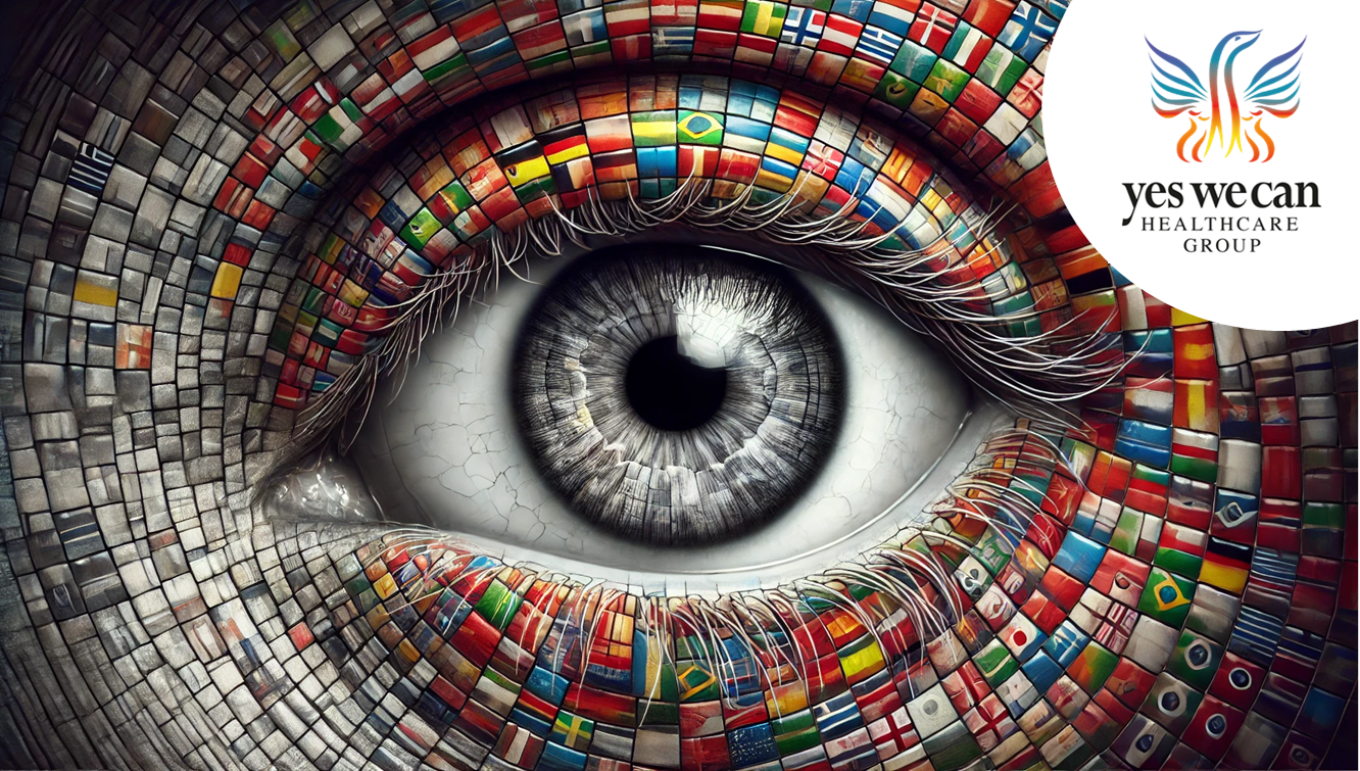Colourblind
It’s rare, but recently someone posted a comment on one of our LinkedIn posts suggesting that we don’t have many colleagues and fellows “of colour” and implying that there might be something intentional behind it. For the sake of practicality, we assumed they meant a darker rather than lighter skin tone, but regardless: it’s unfortunate that they perceive us as so narrow-minded that we would be influenced by something as superficial as skin colour.
This comment reached me while I was sitting at the kitchen bar, listening to music with my daughters—one of my favourite Friday evening activities, by the way, but that’s beside the point. Jan Willem sent me a screenshot of the comment and asked, "Hey Johan. Have you seen this? Should I respond or do you want to?". For those who know Jan Willem, this won’t be surprising, but for others: he reads everything, everywhere, all the time, even around midnight (or later), and is often the first to notice something. I can’t help but smile every time I receive a message that starts with, "Hey Johan, did you know…." or "Hey Johan, have you seen this…?". And believe me, this happens several times a week.
While listening to my eldest daughter’s Spotify playlist, I typed a response on my phone:
"Hey, it’s a shame you feel that way. At Yes We Can, we are actually colourblind: every fellow, every family—regardless of background, colour, or gender—is part of our beautiful fellowship. That’s why families from over 50 countries (from Europe to Asia, from Oceania to Africa, from North America to South America) around the world have already found a new life at Yes We Can. That’s also why we don’t make distinctions in our videos or keep track of who appears in them. You’re welcome to visit us anytime. Have a great weekend!"
An adult phenomenon
After the light-hearted moment at the table about how it’s somewhat amusing that the above response came with a photo of my not-so-very-Dutch-looking appearance, or in the words of Dutch comedian Daniël Arends: "my brown face," other questions lingered in my mind. But I’ll get back to that.
It’s possible that someone formed this opinion based on video footage about Yes We Can, but honestly, we don’t even mind, as long as we know that we are colourblind, and our families feel that too. We will never actively manipulate our communication to prove that we have one or more representatives of every colour, gender, religion, or nationality, and that we perfectly reflect society’s balance. Frankly, we’re not concerned with that.
Our main task is to help families and fellows who need Yes We Can, regardless of their background. Everyone who can contribute to that is welcome—and given an equal opportunity—to work at Yes We Can, without us counting whether you’re diverse enough to represent us. We’re not the Dutch House of Representatives.
It’s disappointing that we still use colour (or the lack thereof) to measure morality and lecture others; a phenomenon that only occurs among adults.
The crucial mistake we repeatedly make is confusing characteristics like colour with other characteristics that actually say something about equality of opportunity for young people, such as: parental income, family wealth or lack thereof, living environment, educational opportunities, access to healthy food or sports while growing up, family stability, etc. Because the young people themselves, of all nationalities—whether they’re Dutch, Russian, Moroccan, German, Saudi, or Swedish—are more alike than different. Something I would love to write about another time, because we see this every day at Yes We Can.
My point, in case it’s not clear: at Yes We Can, we are both blind to colour and yet overflowing with it. The trick is to keep it that way.
The Borders of the Netherlands
What we find more concerning, as a serious problem, are other differences: those between countries. For example, the NHS in England and the cantons in Switzerland are working harder and more concretely on tackling the real issues in youth care and mental health services for young people than our own Ministry of Health, Welfare, and Sport (VWS) in the Netherlands. Problems that go beyond semantics or colour.
Perhaps a harsh statement, but an even harsher reality. As a result, Yes We Can Healthcare Group is at risk of focusing our future developments more on other European countries than on the Netherlands itself, while our waiting list includes over 1,000 families.
While we certainly don’t consider ourselves as large and influential as ASML, we are facing a similar problem: is the Netherlands actually working to constantly improve the business climate for good healthcare organizations and healthcare professionals—those that are in demand internationally—so that we can continue to focus our attention, time, care, and growth here? Or perhaps they don’t even realize that there are countries actively trying to persuade healthcare organizations and its professionals to relocate their activities?
Is the Netherlands doing enough to allow healthcare organizations to focus purely on care and to relieve them as much as possible from other burdens? I could write entire articles about the absurd amount of administration that therapists have to endure to satisfy our bureaucratic need for control.
The honest answer is that in the Netherlands, there is a lot of talk, committees are formed, hundreds of working groups are started and then fade away in bureaucracy and compromise, but little concrete and decisive action is taken to truly rid us of our bureaucracy. By the way, not only healthcare professionals suffer from this: health insurers experience the exact same thing. They are not the ones to blame.
Sometimes it makes me wonder: what if ASML had provided healthcare? How far would our government go then?
Perhaps a somewhat naïve question, which I will still try to answer in the next article. Oddly enough, the answer was closer to our fellows than I ever imagined.

